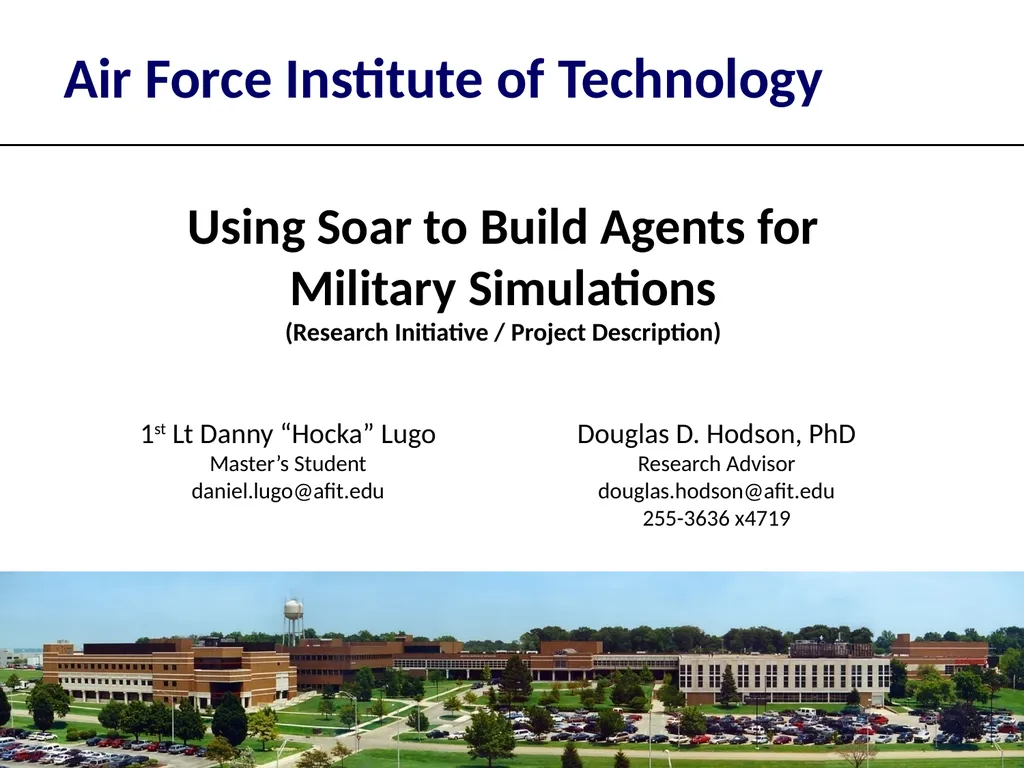
Air Force Institute of Technology Using Soar to
Author: alida-meadow | Published: 2025-08-13
Description: Air Force Institute of Technology Using Soar to Build Agents for Military Simulations (Research Initiative Project Description) 1st Lt Danny Hocka Lugo Masters Student daniel.lugoafit.edu Douglas D. Hodson, PhD Research Advisor
Download Presentation
Download the PPT/PDF: Download
Transcript:
Loading transcript…